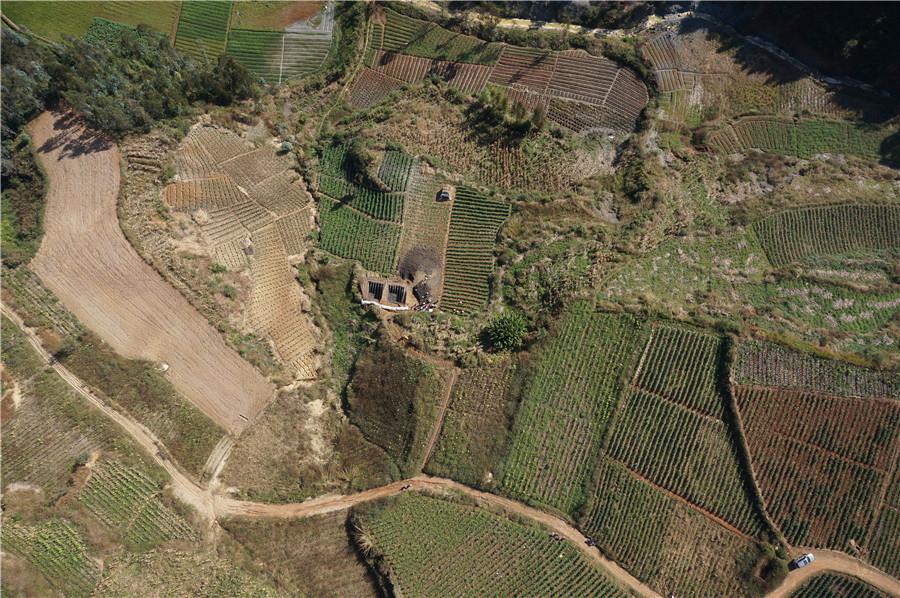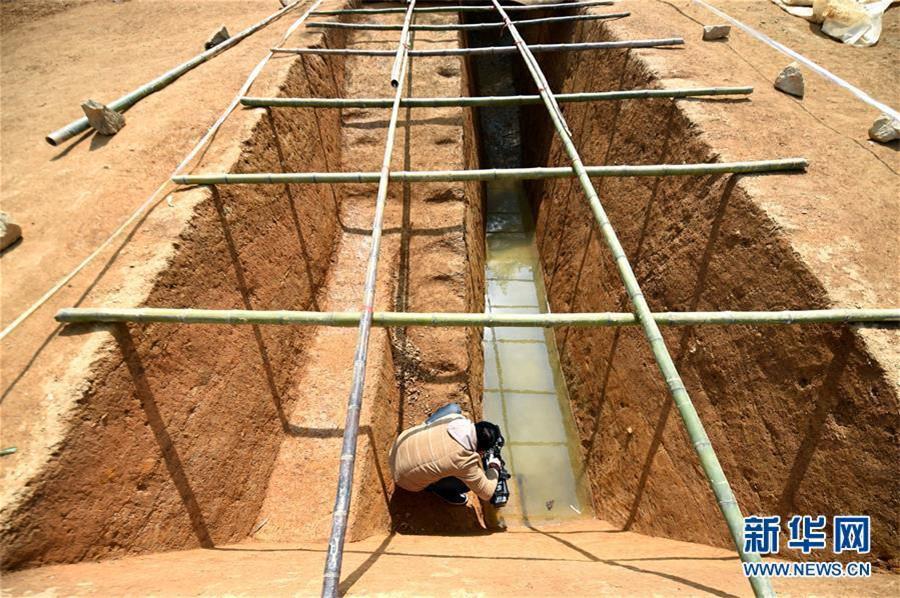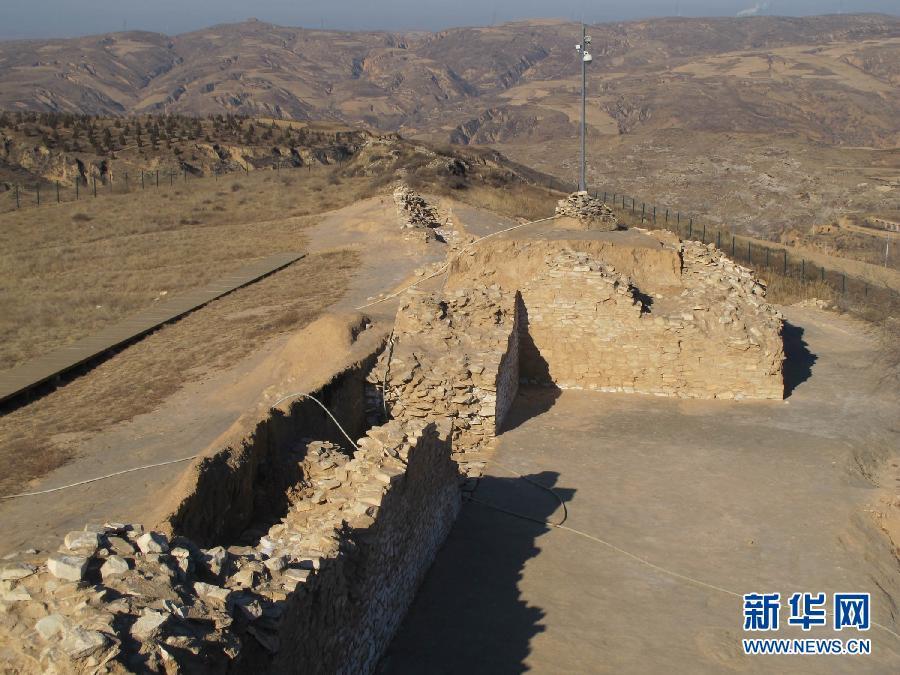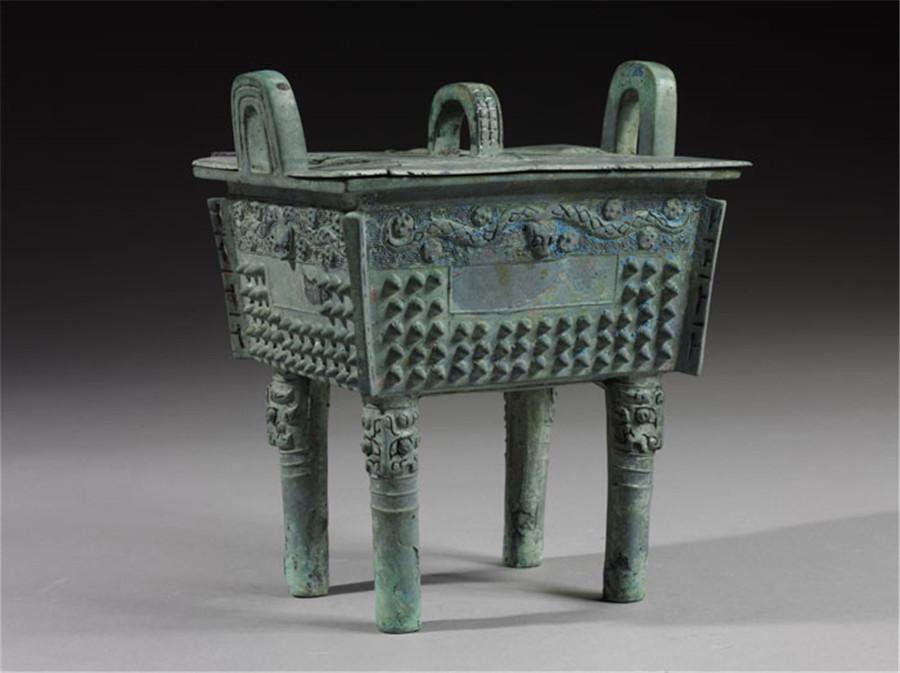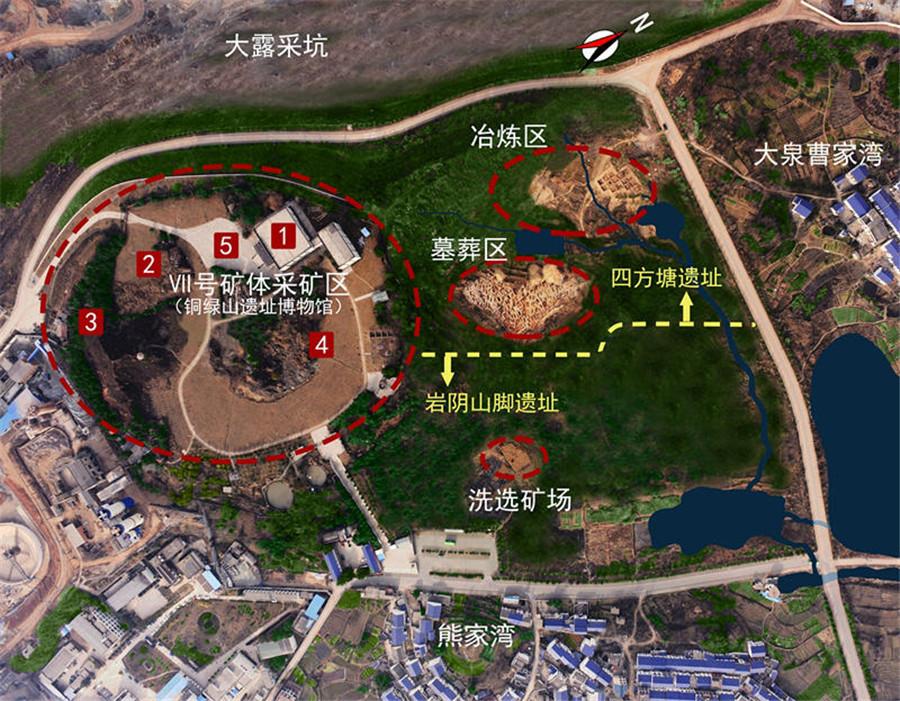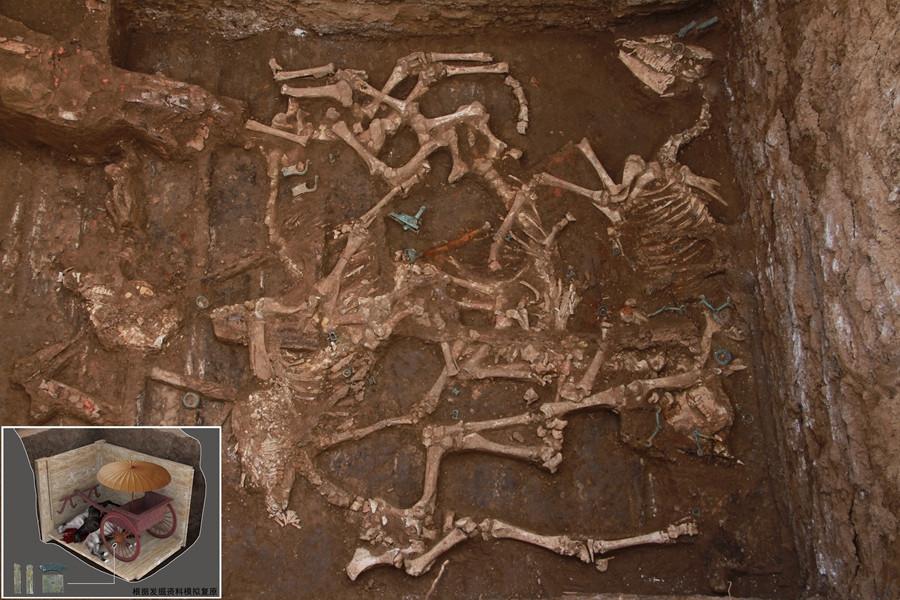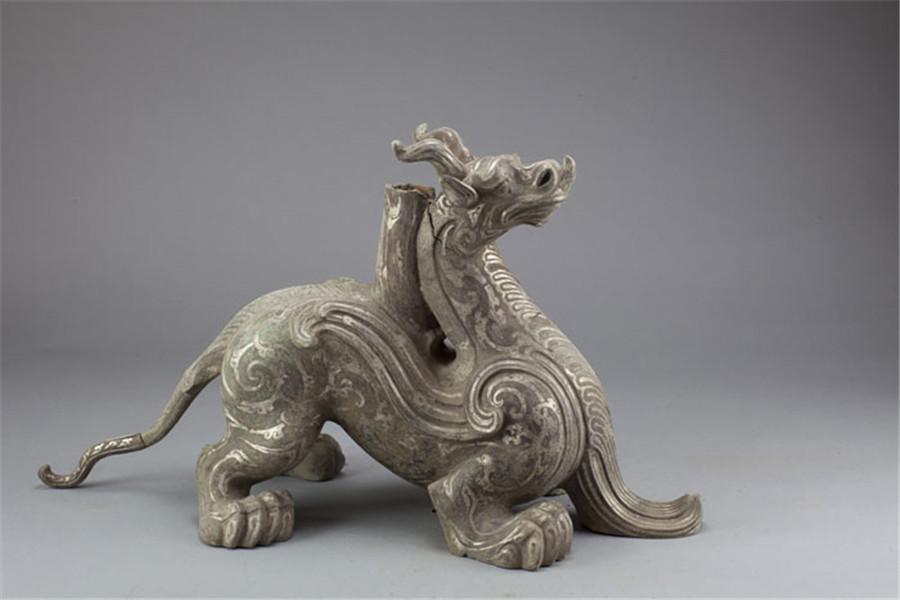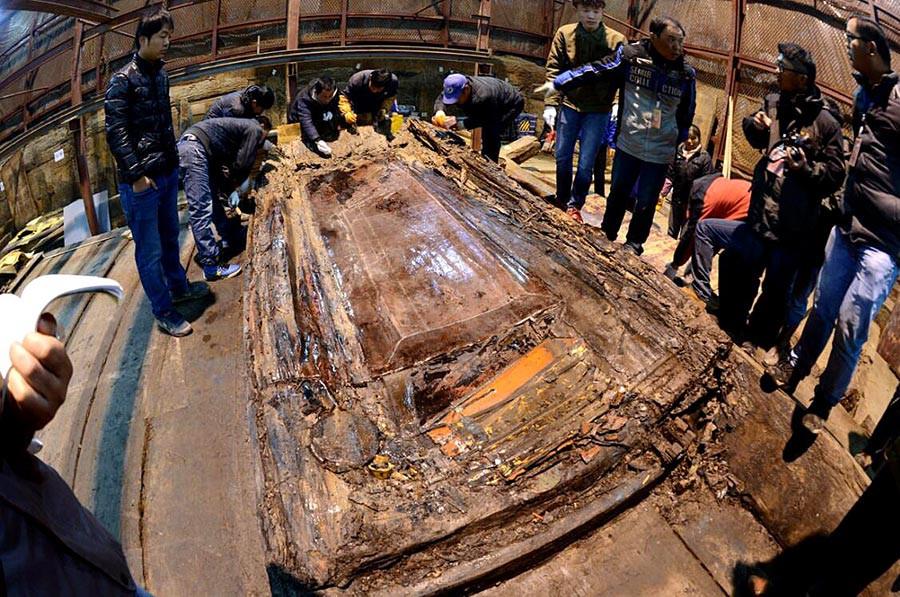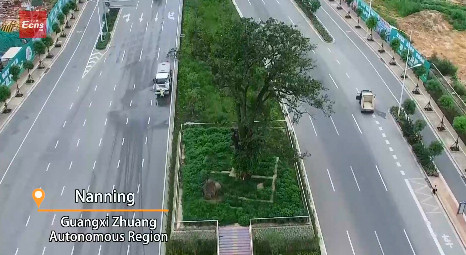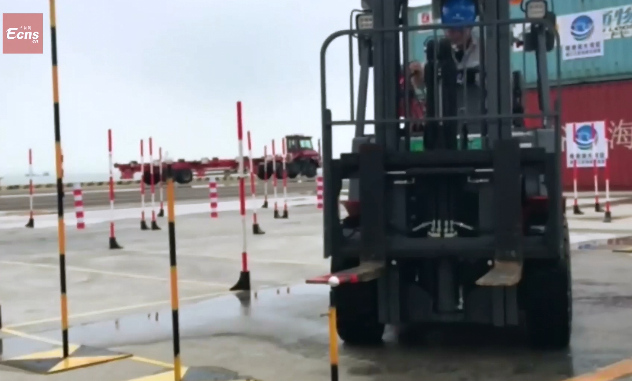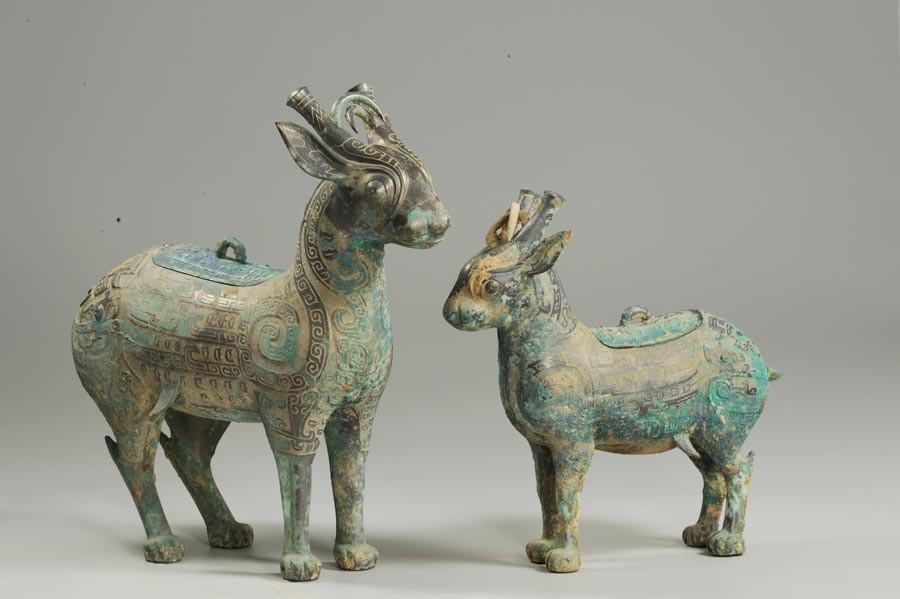
Bronze figurines of beasts were unearthed from the Shigushan Tomb dating from the Western Zhou Dynasty in Baoji, Shaanxi province. (File Photo)
China's major archaeological discoveries were selected from the list of significant archaeological finds announced by the State Administration of Cultural Heritage (SACH) from 2011 to 2016.
Each year, 10 significant finds are selected from a group of candidates that date from the Paleolithic era to the Qing Dynasty (1644-1911). The selection is organized by the Archaeological Society of China and China Culture Relics Newspaper, and supervised by the State Administration of Cultural Heritage.
These major archaeological discoveries cover a rich variety of sites, ranging from the cemetery, kiln, Buddhist remains, sunken ships, granary sites and mining sites, and some of them are relatively rare archaeological findings. These discoveries provide crucial information and bring new perspective to academic research.
The following selection of China's major archaeological discoveries is listed according to chronological order from the Paleolithic era to the Qing Dynasty (1644-1911).
Shigushan Tomb of the Western Zhou Dynasty (c.11th century-771 BC), Baoji, Shaanxi Province
A total of 230 sets of burial offerings were unearthed from 15 burials in the cemetery, including 92 bronze ritual vessels with inscriptions and clan symbols.
Some of the vessels with inscriptions are important for the establishment of a finer chronological framework of Western Zhou remains.
The discovery provides important clues to study Western Zhou burial practices, as well as its history, culture and ritual system.
The Shigushan Tomb of the Western Zhou Dynasty in Baoji of Northwest China's Shaanxi province was listed in China's top 10 archaeological discoveries in 2013.






